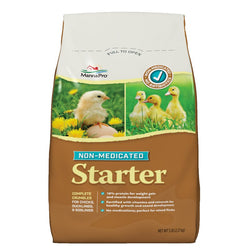When Do Chickens Molt?
Back to blog
Chicken molting is a natural process that occurs in the late summer or early fall. As backyard chicken keepers, it's important to understand the molting phase in a chickens life in order to offer the best support.
The Timing of Chicken Molting
Molting, often referred to as a "chicken's bad hair day," is the process of shedding and regrowing feathers. This cyclical event is triggered by a combination of factors, mainly the change in daylight hours and the chicken's age.
Typically chickens undergo their first molt at around 18 months of age, depending on the time of year that they were hatched. Subsequent molts occur annually, generally during the late summer to early fall period.
Why do Chickens Molt?
The primary purpose of molting is to renew a chicken's plumage. Feathers can become worn, damaged, and less effective over time. It allows chickens to shed these old feathers and replace them with new ones, ensuring better insulation, protection, and overall health.
Signs of Molting
During this process, chickens may exhibit a variety of noticeable changes:
- Feather Loss: The most obvious sign of molting is feather loss. Chickens may appear patchy, with bare spots on their bodies. This loss is more pronounced on the neck, back, and vent areas.
- Reduced Egg Production: Molting places a significant energy demand on hens, causing them to allocate fewer resources to egg production. Consequently, egg laying often decreases or ceases during this period.
- Change in Behavior: Chickens may become more subdued and less active due to the physiological changes occurring during molting.
- Irritated Skin: The process of new feather growth can sometimes cause irritation, leading to poor scratching and grooming behavior.
How to Support Chickens Through Molting
Ensure your chickens are comfortable and healthy during the molting period is crucial. Here are some tips to help your feathered friends through this natural process:
- Proper Nutrition: Supply a well-balanced diet rich in protein to support feather regrowth. A high quality protein feeds such as a Starter or Grower mix can aid the process.
- Additional Protein Sources: Supplement their diet with treats like mealworms, sunflower seeds, or cooked eggs to help boost their protein intake.
- Stress Reduction: Avoid disturbing your chickens unnecessarily and provide a calm and quiet environment. We don mot recommend adding new flock members at this time.
- Warmth: As feathers play a role in temperature regulation, make sure your molting chickens have shelter from extreme weather conditions.
- Dust Baths: Offer a dust bath area filled with fine sand or dirt for chickens to roll in, which helps them soothe their skin during molting. We recommend adding some Diatomaceous Earth or First Saturday Lime to their dust bath area.
By understanding the timing, signs, and ways to support your chickens through the molting process, you can ensure their comfort and contribute to their long-term health.











